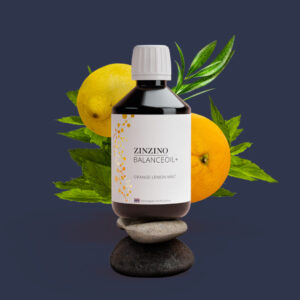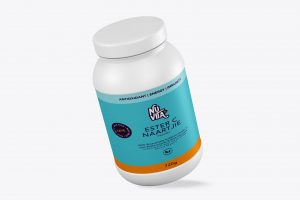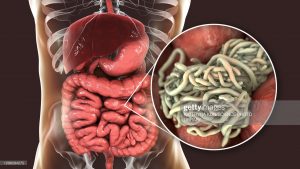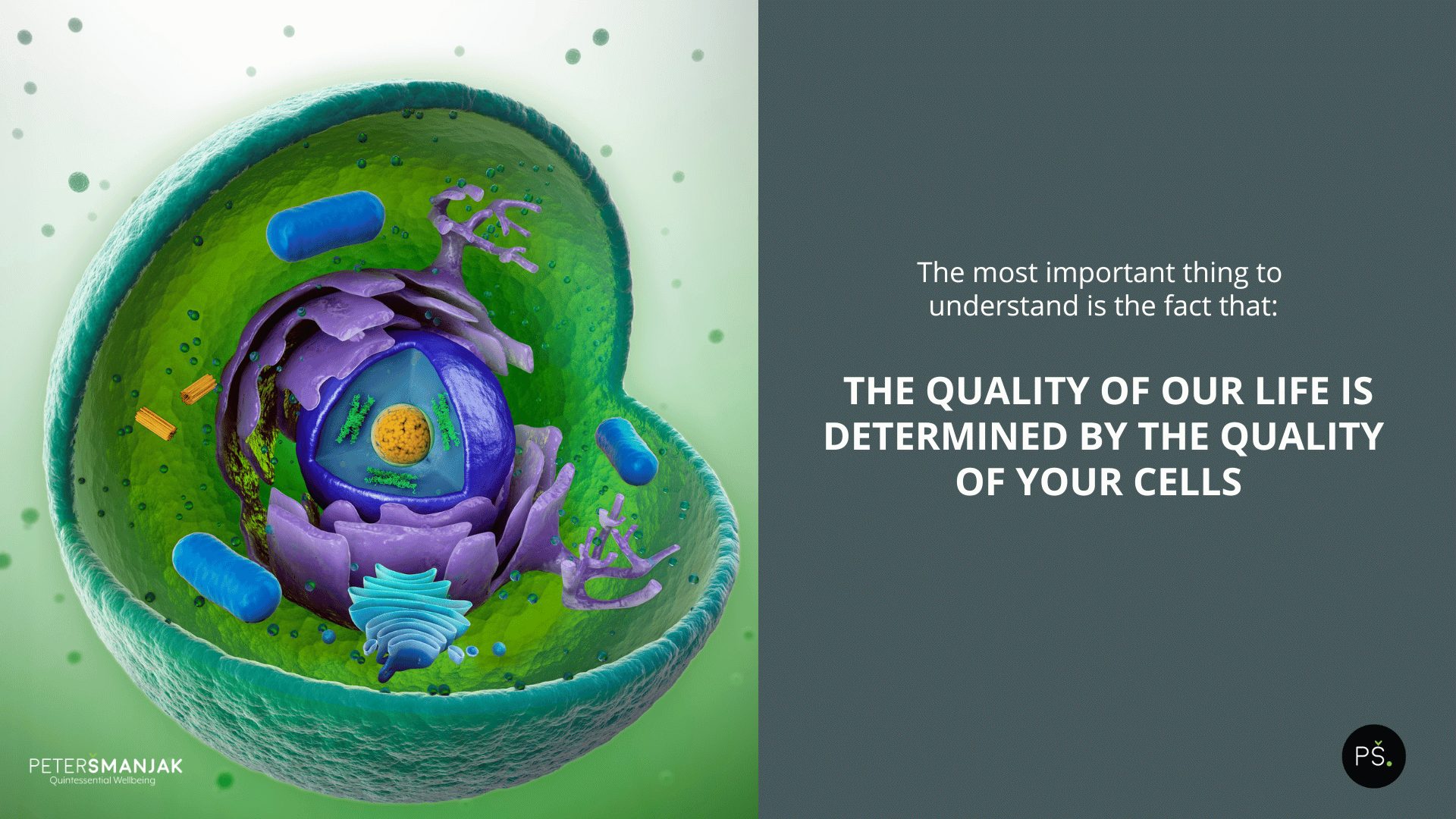by Robert G. Smith, PhD
Vitamin and mineral supplements are sold in several forms. Some vitamins are sold as “natural,” which often means the product has been purified from a plant or animal product. Others are synthetic, which can mean that the biochemical has been manufactured from chemicals that were not directly obtained from plants. But the terms “natural” and “synthetic” can be confusing, because in some cases, a “natural” vitamin product does not necessarily mean the best buy, as it may be expensive and without pure vitamin content. In other cases, the more expensive “natural” form is superior to the “synthetic” form as it contains a higher level of the bio-active vitamin.
Vitamin C
Vitamin C (ascorbate) is the primary extracellular antioxidant in the body. Most other mammals can make their own ascorbate, but humans, primates, and guinea pigs must obtain it from their diet. Vitamin C has many beneficial effects. It supports other antioxidants (e.g. glutathione and vitamin E), empowers the immune system, is a necessary co-factor in the synthesis of collagen, is essential in the metabolism of many essential biochemicals, and has an important function in combating oxidative stress. [1] The minimum required dose (RDA) is 100 mg/day but this is widely considered to be far too low for most people. When under severe stress, the vitamin C level can drop precipitously, requiring high doses to restore the level. Recommended doses range from 1000 – 10,000 mg of vitamin C per day in divided doses, or much more if under stress, e.g. a virus infection or septic shock. [1] In rare cases, precaution must be taken with the dose of vitamin C (e.g. G6PD deficiency, hemochromatosis) but for most individuals the main consideration is to take as much as possible in divided doses throughout the day, up to bowel tolerance. [1-3] You are encouraged to discuss vitamin supplements with your doctor.
The food factor “vitamin C” was named in the 1920s by Funk, the underlying biochemical the prevented scurvy isolated in the 1930s by Szent-Gyorgyi, and the chemical formula of “ascorbic acid” proven by Haworth. [4] However, confusion has occurred about the existence of other biochemicals (flavonoids) that some have thought comprise part of vitamin C and are synergistic with ascorbic acid, following Szent-Gyorgyi’s finding that flavonoids seemed to be necessary for health in guinea pig capillaries. In recent decades, however, most biochemists agree that vitamin C is indeed L-ascorbic acid. Although it remains possible that other vitamins and essential nutrients will be discovered, vitamin C or “L-ascorbic acid” is known to be the biochemical that prevents scurvy.
Synthetic vitamin C
Synthetic vitamin C is derived from glucose by a variety of methods that rely on biological enzymes to catalyze stereo-specific reactions to produce L-ascorbic acid. This is the identical biochemical to the L-ascorbic acid that animals produce in their body. For the industrial synthesis, the usual starting material is corn or wheat starch, which is converted by acid and enzymes to D-glucose, and then by hydrogenation at high temperature to D-sorbitol. The sorbitol is converted by a fermentation step to 2-keto-L-gulonic acid (2KGA) or an intermediate reaction product, which is then further oxidized by biocatalysts (natural enzymes) to L-ascorbic acid. [5,6] This modern industrial (Reichstein) process was invented in 1933, but was elaborated further in China in the 1960s utilizing other biocatalysts. [5,6] After final purification, both of these processes produce about 60% yield of L-ascorbic acid from the original D-glucose. Since the fermentation and biocatalyzed steps utilize natural biological enzymes which maintain the stereo-specificity of the products, the final product is pure L-ascorbic acid.
Erythorbic acid
The isomer D-isoascorbic acid (erythorbic acid) is also manufactured by a stereo-specific bio-catalyst synthesis. [6] It is absorbed by the body, though less efficiently than L-ascorbic acid, and has identical antioxidant properties to L-ascorbic acid, but has none of the biological activity of L-ascorbate and cannot prevent scurvy. [7] Erythorbic acid is widely used as an antioxidant food preservative and is thought to be safe. [8-10]
Ascorbyl palmitate
Another form of vitamin C is an ester of ascorbic acid and palmitic acid called “ascorbyl palmitate”. This is a fat-soluble form of vitamin C that is widely used as an additive to prevent spoilage in foods and in skin creams. It can be incorporated into cell membrates and can protect other biomolecules from damage by free radicals. However, although it can protect fatty foods such as potato chips, it can’t be utilized as vitamin C until it is digested by stomach acid into its palmitic and ascorbic acid components. Ascorbyl palmitate should not be confused with “Ester-C”, which is a combination of calcium ascorbate and associated metabolites of ascorbate.
Buffered vitamin C
L-ascorbic acid is sour, similar to vinegar in its acidity, and in some individuals it can irritate the stomach or when applied the skin. The buffered form of vitamin C, sodium L-ascorbate (often sold as “sodium ascorbate”), or other mineral salts, e.g. potassium, calcium, or magnesium ascorbate, are non-acidic and will not upset the stomach or irritate the skin. This buffered sodium ascorbate form is utilized for intravenous administration of vitamin C. Although it contains sodium, it does not much affect blood pressure since it lacks the chloride that is in salt. Chewable tablets of vitamin C can damage the teeth if the vitamin C is acidic, so it is important to read the contents label to look for sodium ascorbate.
Liposomal vitamin C
Liposomes are small (~50 nM dia) vesicles of phospholipid membranes, similar to the bilayer lipid membrane of living cells, that are supplied in a solution of water or alcohol (ethanol) for oral ingestion. The liposomes can contain a small amount of a biochemical and/or mineral solution. The membrane protects the contents until the liposome fuses with a cell’s membrane to release the biochemical directly into the cell. Since this release method does not require any active transport process (such as the glucose transporters that take up vitamin C into cells), it comprises an independent absorption method and can increase the maximum level of vitamin C absorbed into the body. [11] Liposomes can contain virtually any form of vitamin C, but the usual form is L-ascorbic acid, sometimes mixed with sodium ascorbate. Liposomal vitamin C is generally considered to be more effective than regular oral vitamin C. The recommended dose is 1000-2000 mg taken 1-3 times/day, or more if under stress, e.g. a virus infection.
Confusion about natural vitamin C
The “natural form” of vitamin C has sometimes been asserted to be ascorbic acid in combination with other natural chemicals such as bioflavonoids and associated biochemicals that are found in fruits and vegetables. The confusion may have originated from Szent-Gyorgyi’s report that bioflavonoids could amplify the action of ascorbic acid to prevent leakage from capillaries. [12] However, it was later found that L-ascorbate is the only biochemical necessary to prevent scurvy. Although the bioflavonoids in plants are not vitamins, i.e. they have not been found essential for human health, they are antioxidants and are beneficial to health.
Another confusion about “natural” vitamin C is the myth that only ascorbate purified directly from natural sources contains the pure bio-active stereo-isomer L-ascorbate. This confusion may have originated with vitamin E, which is commonly sold as a synthetic product containing both d- and l- isomers, dl-alpha-tocopherol (see “vitamin E” below). The manufacturing process that creates vitamin C from glucose produces only the pure L-ascorbate form because the stereo-specific conversion is accomplished with bio-catalysts. You can be assured that when you buy inexpensive synthetic vitamin C, you are getting the pure L-ascorbate vitamin that prevents scurvy and is a necessary co-factor for many biological enzyme reactions.
Purchase vitamin C in capsules and bulk crystals
A variety of packaging forms for vitamin C are widely available. It can be purchased as L-ascorbic acid in pure form as tablets, capsules containing crystals of vitamin C, or the crystals in bulk powder form. The capsule form is usually better absorbed than the tablet form, but the bulk powder form is less expensive. Vitamin C can also be purchased as a buffered (non-acidic) mineral salt of ascorbate, e.g. calcium, magnesium, or sodium ascorbate. An excellent summary of the different forms of vitamin C can be found online at the Linus Pauling Institute. [7]
Vitamin E (tocopherol, tocotrienol)
Vitamin E is a powerful antioxidant that protects cell membranes from free radical damage. It is found in a variety of foods, including vegetable oils (e.g. canola, corn, olive, peanut, safflower, soy), nuts, sunflower seeds, tomato products, greens (spinach, beet, turnip, kale, collards). When taken as a supplement it has been shown to benefit health of blood vessels and it slows the rate of clotting. Vitamin E strengthens the heartbeat and has a variety of other beneficial effects. [13-17] The recommended dose starts at 200 IU/day for several weeks, then slowly progresses to higher daily doses (400-800 IU/day or higher). After providing its antioxidant function, a vitamin E molecule can be regenerated (i.e. re-reduced) by contact with other antioxidants such as vitamin C or gluthathione (GSH). It can also be used topically to help the skin heal after a burn. [15]
Vitamin E comprises 4 tocopherol forms:
alpha-tocopherol
beta-tocopherol
gamma-tocopherol
delta-tocopherol
and 4 tocotrienol forms:
alpha-tocotrienol
beta-tocotrienol
gamma-tocotrienol
delta-tocotrienol
Structure of tocopherols and tocotrienols
The tocopherols and tocotrienols have a polar water-soluble “head” and a fat-soluble “tail”. The alpha, beta, gamma, and delta forms differ in the structure of the head, and the tocopherols and tocotrienols differ in the structure of the tail. [13] Both tocopherols and tocotrienols sit in the lipid bilayer of cell membranes with the tail inserted next to other lipid molecules and the polar head sticking out into solution. The tocopherol tail is saturated (i.e. has no double C-C bonds) but the tocotrienol tail is poly-unsaturated (with 3 double C-C bonds).
Tocopherols
The most commonly sold form of vitamin E is alpha-tocopherol. It is the most abundant form in the body, and was originally thought to be most important form of vitamin E when it was first discovered, which was in reproduction. It is an important fat-soluble antioxidant that sits in cell membranes to protect the fatty acids and membrane proteins from being oxidized by free radicals. The other tocopherol forms are important anti-oxidants, but in addition have a variety of other unrelated functions, for example, in cell signaling pathways. [13] Alpha-tocopherol is sold in the natural forms “d-alpha-tocopherol” and “mixed tocopherols.” These forms have high biological activity and are purified from natural plant products.
Tocotrienols
Compared to the tocopherols, the tocotrienols are more potent anti-oxidants, but they are also more expensive because they occur in lower levels in the originating plant material. Besides their powerful antioxidant function, they are involved in a variety of other important signaling and metabolic functions. [15-19] They are thought to be involved in regulating pathways of lipid metabolism and fatty acid biosynthesis, and also to modulate glucose homeostasis, so they may be of use in preventing diabetes. [16,17] Beta- and gamma-tocotrienol have potent anti-cancer effects. [18] Tocotrienols from palm oil protect against neurodegenerative changes in diabetic retinopathy. [19]
Natural vitamin E
Vitamin E can be purified from natural oils distilled from a variety of plant sources, such as palms, bananas, pineapples, wild leek, sugar cane, rice, wheat and other cereals, and green algae. [20] Since these oils contain a mixture of the different tocopherol and tocotrienol forms, the purified oil is often sold as a mixture, commonly labeled “mixed tocopherols” or “tocotrienols”. Natural vitamin E is also sold as 100% d-alpha-tocopherol, further purified from the tocopherol mixture. It is likely that the “mixed tocopherols” form provides more health benefits than d-alpha-tocopherol.
Synthetic vitamin E
The alpha-tocopherol form of vitamin E can also be synthesized by a chemical process that creates both d- and l- stereo-isomers in equal proportion. The synthesis is made by an acid-catalyzed reaction of trimethylhydroquinone and phytol. [21] Both of the d- and l-isomers have identical antioxidant capability, but only d-alpha-tocopherol (also called the RRR-alpha-tocopherol) has biological acivity where it is taken up by the body and utilized in many biochemical pathways and organs. There is some evidence that the synthetic form, dl-alpha-tocopherol (also called all-rac-alpha-tocopherol), can cause unwanted side effects. [22] The chemical synthesis method generates but cannot readily separate the d- and l- tocopherol forms, and since both forms are powerful antioxidants, they can serve to protect oil-based foods and skin creams. However, dl-alpha-tocopherol has only 50% of the biological activity of d-alpha-tocopherol. [13]
To achieve the greatest benefit from vitamin E, the best forms to purchase are “mixed tocopherols” and “tocotrienols” which cannot be synthesized but must be purified from natural sources. These forms contain a mixture of alpha, beta, delta, and gamma forms of tocopherols and tocotrienols. Although the “mixed tocopherols” and “tocotrienols” forms of vitamin E cost more than the synthetic dl-alpha-tocopherol form, they can activate more pathways in the body and will provide the best health benefit.
Alpha-tocopheryl acetate
This biochemical is an ester of alpha-tocopherol and acetic acid. It is not readily oxidized so it has a longer shelf life than alpha-tocopherol, and can be hydrolyzed by the acid in the stomach to release the alpha-tocopherol. It is widely added to animal feed to supply vitamin E because of its longer shelf life. [23] It is also widely included in skin creams, and is thought to be slowly hydrolyzed in the skin so its alpha-tocopherol content can protect against UV rays. Unfortunately it has recently been improperly included in vaping products and is thought to have caused severe lung damage. [24] Since alpha tocopheryl acetate is not vitamin E, it cannot be readily utilized by the body and acts much like other oils to clog the lungs when inhaled, which is thought to be the origin of the damage.
Vitamin E and vitamin C reduce risk of strokes
Vitamins C and E are both important antioxidants and provide excellent anti-inflammatory benefits. Vitamin C can regenerate vitamin E that has been exhausted (oxidized) in doing its antioxidant function. Therefore, vitamin E is most effective when taken with adequate doses of vitamin C. Vitamin E slows the rate of blood clotting, which improves circulation and lowers the risk for ischemic stroke, but can increase the risk of hemorrhagic stroke (bleeding) in patients whose blood vessels are weak or damaged by inflammation. [25] However, when taken initially at a low dose that is increased gradually over several weeks, vitamin E strengthens blood vessels. [13-15] Further, vitamin C reduces the rate of hemorrhagic strokes because it strengthens arteries and prevents bleeding and inflammation. [26] Supplements of vitamins C and E along with other antioxidants increase elasticity of arteries and reduce blood pressure. [27] Thus, when taken together, antioxidants such as vitamin C, E, and selenium reduce risk for both hemorrhagic and ischemic strokes, hypertension, and heart disease.
Conclusion
Although both vitamin C and vitamin E can be synthesized, only synthetic vitamin C (L-ascorbate) has identical biological activity to natural vitamin C purified from plant products. Synthetic vitamin E (dl-alpha-tocopherol) has half the biological activity of natural vitamin E, and may cause unwanted side effects. Both vitamin C and E have stereo-isomers that are biologically inactive. However, vitamin C is manufactured and sold exclusively as the pure active L-ascorbate form, whereas vitamin E is manufactured and widely sold as a mixture of the biologically active and inactive forms (dl-alpha-tocopherol). The natural form of vitamin E is widely sold as d-alpha-tocopherol, or as a mixture of all the tocopherol and/or tocotrienol forms (alpha, beta, gamma, delta). You can be assured that synthetic vitamin C (L-ascorbate) and natural “mixed tocopherols” and “tocotrienols” are the most effective and health-promoting forms.
References
1. Orthomolecular Medicine News Service (2020) Rationale for Vitamin C Treatment of COVID-19 and Other Viruses. http://orthomolecular.org/resources/omns/v16n21.shtml
2. Hickey S, Roberts HJ, Cathcart RF, (2005) Dynamic Flow: A New Model for Ascorbate. J Orthomol Med. 20:237-244. http://orthomolecular.org/library/jom/2005/pdf/2005-v20n04-p237.pdf.
3. Cathcart RF (1981) The Method of Determining Proper Doses ofVitamin C for the Treatment of Disease byTitrating to Bowel Tolerance J Orthomol Psychiat, 10:125-132. http://orthomolecular.org/library/jom/1981/pdf/1981-v10n02-p125.pdf
4. Zetterström R.(2009) Nobel Prize 1937 to Albert von Szent-Györgyi: identification of vitamin C as the anti-scorbutic factor. Acta Paediatr. 98:915-919. https://www.ncbi.nlm.nih.gov/pubmed/19239412
5. Reichstein, T. und Grüssner, A. (1934): Eine ergiebige Synthese der L-Ascorbins”ure (C-Vitamin), Helv. Chim. Acta 17:311-328. https://doi.org/10.1002/hlca.19340170136
6. Pappenberger G, Hohmann HP. (2014) Industrial production of L-ascorbic Acid (vitamin C) and D-isoascorbic acid. Adv Biochem Eng Biotechnol. 143:143-88. https://www.ncbi.nlm.nih.gov/pubmed/24258144
7. Linus Pauling Inst. The Bioavailability of Different Forms of Vitamin C (Ascorbic Acid) https://lpi.oregonstate.edu/mic/vitamins/vitamin-C/supplemental-forms
8. Shang X, Zhou Z, Jiang S, Guo H, Lu Y. (2020) Interrelationship between myoglobin oxidation and lipid oxidation during the processing of Cantonese sausage with d-sodium erythorbate. J Sci Food Agric. 100:1022-1029. https://www.ncbi.nlm.nih.gov/pubmed/31646643
9. Leclercq C, Arcella D, Turrini A. (2000) Estimates of the theoretical maximum daily intake of erythorbic acid, gallates, butylated hydroxyanisole (BHA) and butylated hydroxytoluene (BHT) in Italy: a stepwise approach. Food Chem Toxicol. 38:1075-1084. https://www.ncbi.nlm.nih.gov/pubmed/11033195
10. R. Walker. Erythorbic acid and its sodium salt. http://www.inchem.org/documents/jecfa/jecmono/v28je03.htm
11. Davis JL, Paris HL, Beals JW, Binns SE, et al (2016) Liposomal-encapsulated Ascorbic Acid: Influence on Vitamin C Bioavailability and Capacity to Protect Against Ischemia-Reperfusion Injury. Nutr Metab Insights. 9:25-30. https://www.ncbi.nlm.nih.gov/pubmed/27375360
12. Szent-Gyoergyi A. (1963) Lost in the twentieth century. Ann. Rev. Biochem. 32:1-15. https://www.ncbi.nlm.nih.gov/pubmed/14140702
13. Papas A (1999) The vitamin E factor. HarperCollins, ISBN-13: 978-0060984434.
14. Saul AW (2011) Vitamin E Attacked Again Of Course. Because It Works. Orthomolecular Medicine News Service. http://orthomolecular.org/resources/omns/v07n11.shtml
15. Hoffer A, Saul AW (2008) Orthomolecular Medicine for Everyone. Basic Health Pubs. ISBN-13: 978-1591202264
16. Wong SK, Kamisah Y, Mohamed N, Muhammad N, et al. (2020) Potential Role of Tocotrienols on Non-Communicable Diseases: A Review of Current Evidence. Nutrients. 12(1). pii: E259. https://www.ncbi.nlm.nih.gov/pubmed/31963885
17. Pang KL, Chin KY. (2019) The Role of Tocotrienol in Protecting Against Metabolic Diseases. Molecules. 24. pii: E923. doi: 10.3390/molecules24050923. https://www.ncbi.nlm.nih.gov/pubmed/30845769
18. Idriss M, Hodroj MH, Fakhoury R, Rizk S. (2020) Beta-Tocotrienol Exhibits More Cytotoxic Effects than Gamma-Tocotrienol on Breast Cancer Cells by Promoting Apoptosis via a P53-Independent PI3-Kinase Dependent Pathway. Biomolecules. 10(4). pii: E577. https://www.ncbi.nlm.nih.gov/pubmed/32283796
19. Sadikan MZ, Nasir NAA, Agarwal R, Ismail NM. (2020) Protective Effect of Palm Oil-Derived Tocotrienol-Rich Fraction Against Retinal Neurodegenerative Changes in Rats with Streptozotocin-Induced Diabetic Retinopathy. Biomolecules. 10(4). pii: E556. https://www.ncbi.nlm.nih.gov/pubmed/32260544
20. Nehdi IA, Sbihi HM, Tan CP, Al-Resayes SI, Rashid U, Al-Misned FA, El-Serehy HA. (2020) Chemical Composition, Oxidative Stability, and Antioxidant Activity of Allium ampeloprasum L. (Wild Leek) Seed Oil. J Oleo Sci. Epub ahead of print] https://www.ncbi.nlm.nih.gov/pubmed/32281562
21. Diamond Shamrock Corp (1971) Process for preparation of d,l-alpha tocopherol. https://patents.google.com/patent/US3708505A
22. Ranard KM, Kuchan MJ, Bruno RS, Juraska JM, Erdman JW. (2019) Synthetic alpha-tocopherol, compared with natural alpha-tocopherol, downregulates myelin genes in cerebella of adolescent ttpa-null mice. J Nutr. pii: nxz330. https://www.ncbi.nlm.nih.gov/pubmed/31883016
23. Akbari Moghaddam Kakhki R, Bakhshalinejad R, Zoidis E. (2018) Interactive effects of alpha-tocopheryl acetate and zinc supplementation on the antioxidant and immune systems of broilers. Br Poult Sci. 59:679-688. https://www.ncbi.nlm.nih.gov/pubmed/30196707
24. Duffy B, Li L, Lu S, Durocher L, et al. (2020) Analysis of Cannabinoid-Containing Fluids in Illicit Vaping Cartridges Recovered from Pulmonary Injury Patients: Identification of Vitamin E Acetate as a Major Diluent. Toxics. 8. pii: E8. https://www.ncbi.nlm.nih.gov/pubmed/31991538
25. Schürks M, Glynn RJ, Rist PM, Tzourio C, Kurth T. (2010) Effects of vitamin E on stroke subtypes: meta-analysis of randomised controlled trials. BMJ. 341:c5702. https://www.ncbi.nlm.nih.gov/pubmed/21051774
26. Kurl S, Tuomainen TP, Laukkanen JA, Nyyssönen K, et al. (2002) Plasma vitamin C modifies the association between hypertension and risk of stroke. Stroke. 33:1568-1573. https://www.ncbi.nlm.nih.gov/pubmed/12052992
27. Shargorodsky M, Debby O, Matas Z, Zimlichman R. (2010) Effect of long-term treatment with antioxidants (vitamin C, vitamin E, coenzyme Q10 and selenium) on arterial compliance, humoral factors and inflammatory markers in patients with multiple cardiovascular risk factors. Nutr Metab 7:55. https://www.ncbi.nlm.nih.gov/pubmed/20604917
Nutritional Medicine is Orthomolecular Medicine. This article may be reprinted free of charge provided 1) that there is clear attribution to the Orthomolecular Medicine News Service, and 2) that both the OMNS free subscription link http://orthomolecular.org/subscribe.html and also the OMNS archive link http://orthomolecular.org/resources/omns/index.shtml are included.







